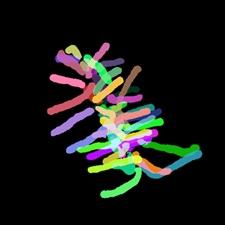
Beyond the chromosome segregation error
Kazuo Yamagata
Faculty of Biology-Oriented Science and Technology, Kindai University
Chromosome segregation during early cleavage stages of preimplantation development has been thought to be tightly regulated to secure the normal and safe full-term development. However, surprisingly, recent clinical data has proven that nearly 80% of human early embryos possess the numerical and structural chromosome error. This result raises the questions whether only embryos born without chromosome errors, or embryos born with chromosome aberrations but compensated for them by some mechanism. To elucidate them, we have developed the live-cell imaging for the chromosome segregation of the cleavage-stage embryo. In this method, mRNA encoding fluorescent probe, fluorescently-labeled antibody, and/or fluorescently-labeled guide RNA are injected into oocyte and/or zygote, and those are placed on the Spinning-disk confocal microscopy. Big advantage of our imaging is that it has ultra-low invasive character to the embryos. This feature has made the observations and quantifications over several days from fertilization to blastocyst stage possible, and also possible to presume the impact of the chromosome segregation error to further development. Upon this methodology, we recently succeeded in observing the chromosome segregation and counting the number of the chromosomes by super-resolution microscopy. In this seminar, I am going to talk about the details for above methodologies and would like to discuss about our recent results of chromosome segregation errors in mouse, bovine and human embryos and also in mouse egg injected with mammoth nuclei.
